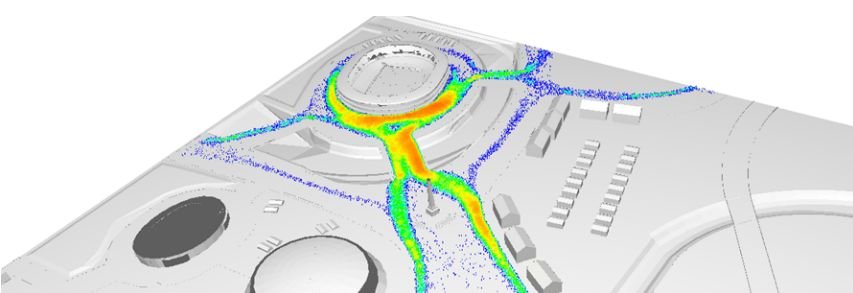
Senior Lecturer
University of Sheffield
Paul works in the Department of Computer Science at the University of Sheffield and is the Director of the Sheffield Research Software Engineering Group. He is a recipient of an EPSRC Early Career Research Software Engineering Fellowship, the focus of this award is harnessing the power of specialised architectures, such as graphics processing units (GPUs) to accelerate scientific discovery.
To find out more about the software, please visit: http://www.flamegpu.com
FLAME GPU 2
Project Overview
FLAME GPU 2 is a development of the original open-source FLAME GPU software for agent-based modelling in complex systems. The updated software has been developed out of a recognition that GPUs present a range of challenges for modellers, including:- A lack of unified parallel models for agents
- Agents are heterogeneous
- Agents are born or die, leading to sparse data layouts
- Agents communicate
- Agents don’t stay still
- GPU programming is hard
Did you work with the local Bede research software engineer (RSE) support?
Each of the N8 universities have a full-time equivalent RSE to support Bede. The RSE team at Sheffield contains a number of GPU specialists who have experience of applying FLAME GPU to research.They have also worked in applying GPU computing to problems more generally and have worked with industry to demonstrate impact, particularly in acceleration of transportation simulations.
What was the benefit of working with the Bede RSE?
RSEs offer collaboration rather than support. The knowledge of code and research practice that RSEs have is vital to working with researchers to accelerate their work.The collaborative model that underpins Bede is really exciting as it will enable us to build a network of shared expertise from across the N8 Research Partnership.
What new capabilities does Bede give?
Bede’s large number of GPUs and NVLink interconnects will facilitate much larger agent-based simulations as well as ensembles of simulations. A billion simultaneously simulated individual agents is not beyond the realms of possibility. It will also enable us to extend our partnerships with industry and other research partners.